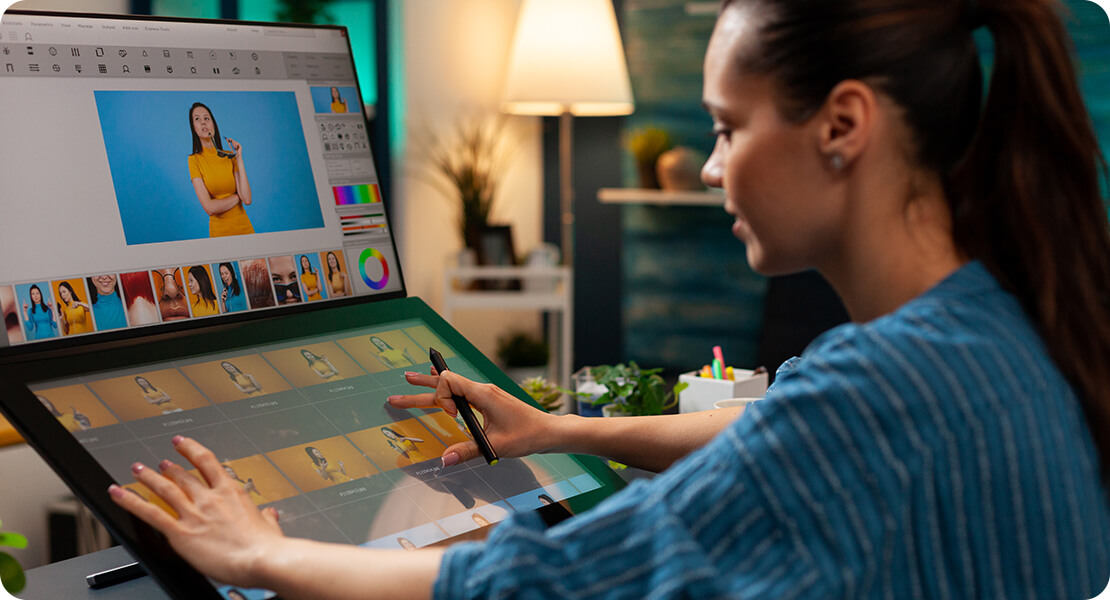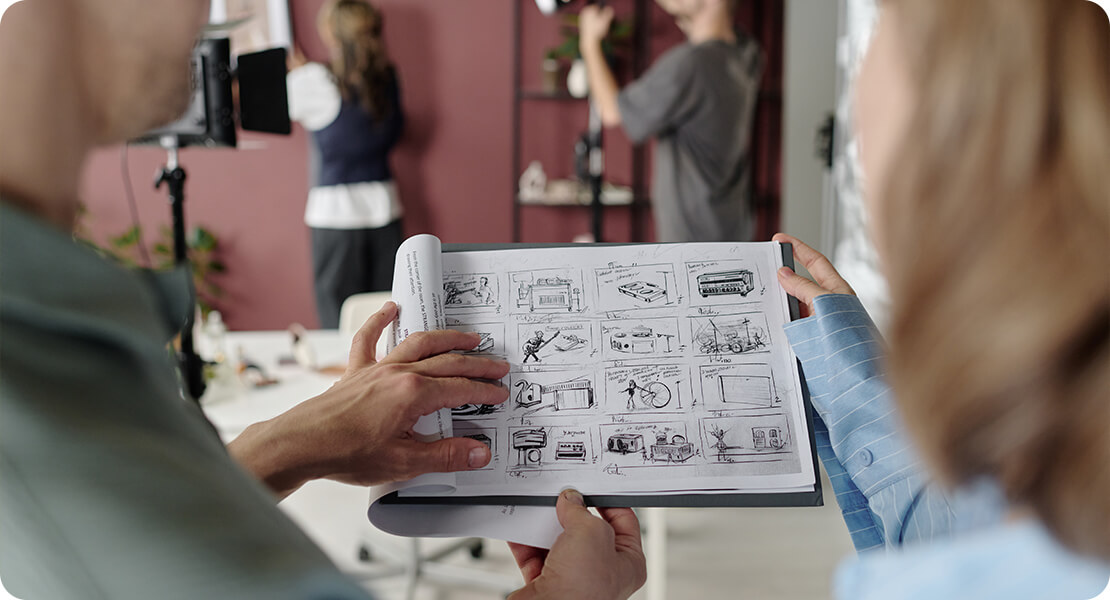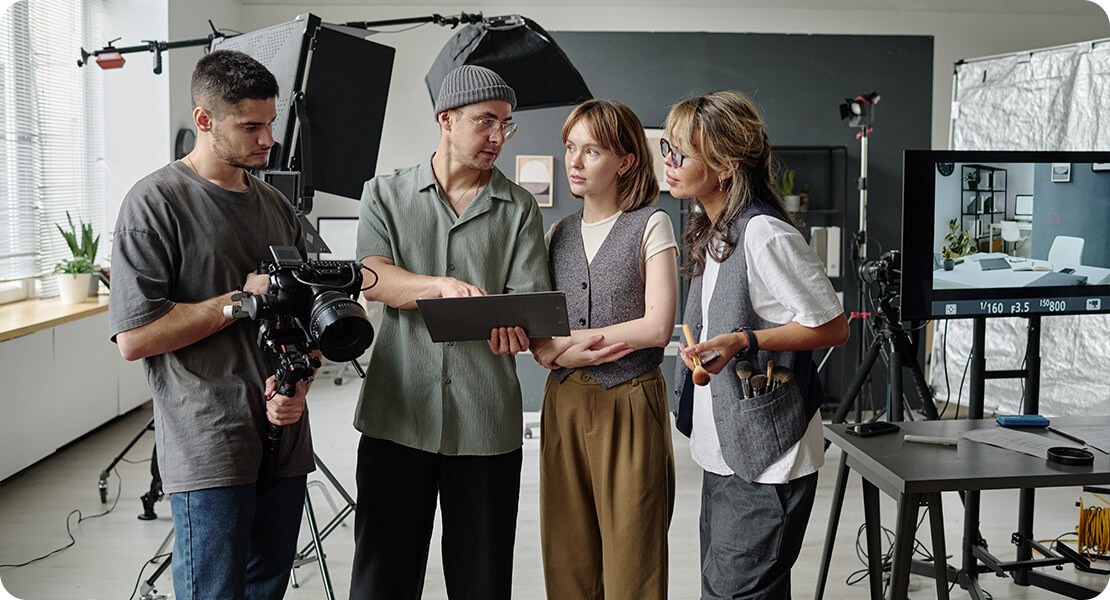
Animation has never been more in demand. From feature films and video games to social media and branded content, the need for skilled animators is booming across industries. But with opportunity comes competition—and to stand out, you’ll need more than raw talent. You need the right tools and a deep understanding of the craft. In this guide, we’ll break down the essentials every animator should master in 2025 and beyond. From hardware specs and must-have software to key artistic principles and in-demand skills, consider this your complete checklist.
Whether you’re aiming for a studio position or building a freelance career, this toolkit will help you navigate the field with confidence. Don’t worry if you’re still early in your journey—there’s room for all skill levels here. But if your goal is to get hired and stay competitive, then it’s time to get serious about what’s in your creative arsenal. Let’s dive in.
Core Animation Software: Your Digital Workspace
The foundation of every animator’s toolkit is software. There’s no one-size-fits-all platform—what you choose depends on the type of work you’re aiming for. For 2D animation, Toon Boom Harmony remains an industry standard, especially in television, offering robust tools for rigging, compositing and drawing directly in vector or bitmap. Adobe Animate is more accessible and great for web content, while TVPaint offers an excellent solution for hand-drawn, frame-by-frame animators.
For 3D work, Autodesk Maya still dominates in film and AAA games, providing advanced rigging and simulation capabilities. Blender, however, has carved a strong niche by offering powerful modelling, sculpting and animation tools completely free—a great option for indie creators or students.
Motion graphics and short-form content creators often rely on Adobe After Effects, particularly when combined with Illustrator for vector assets and Photoshop for textures. It’s also a favourite in marketing, explainer videos, and UI animations. And if you’re interested in game development or virtual production, learning Unity or Unreal Engine is essential—they enable real-time animation, immersive environments, and interactive storytelling.
Beyond the main platforms, industry-standard tools like ZBrush (sculpting), Substance Painter (texturing), and Nuke (compositing) fill in the pipeline.
Mastering your preferred suite—and knowing how they connect—is vital. Tutorials, YouTube breakdowns, and short projects are the best ways to deepen your understanding and stay current with features and updates.
Hardware Essentials: Building a Reliable Setup
Animation is demanding—on both you and your machine. Whether you’re working from home or in a studio, reliable hardware is critical. Start with a powerful computer: aim for a multi-core processor (Intel i7 or higher, or AMD Ryzen 7), 32GB RAM (minimum 16GB), and a good GPU (NVIDIA RTX series or AMD equivalent) to handle 3D rendering, particle simulations and real-time previews.
SSDs are essential for fast file access and rendering performance—ideally paired with secondary large-capacity drives for storing assets and projects. Having dual or ultra-wide monitors improves efficiency, especially for layout, animation and editing work, where multiple panels and timelines are in play.

For 2D animators, a high-quality drawing tablet like a Wacom Cintiq or XP-Pen Artist with a pressure-sensitive stylus allows for intuitive sketching and frame-by-frame drawing. If you need portability, iPads with the Apple Pencil, running apps like Procreate or RoughAnimator, are excellent for ideation and rough animation on the go. For 3D artists, using a programmable keypad like the TourBox or a 3Dconnexion SpaceMouse can streamline your navigation and repetitive tasks.
Don’t overlook peripherals: a colour-accurate monitor, ergonomic chair, and adjustable desk help prevent physical strain. Animation sessions can run long—your setup should support both performance and your physical well-being. Regular maintenance (like cleaning fans and updating drivers) ensures your tech works as hard as you do.
Artistic Foundations: Drawing, Timing and Appeal
No matter how advanced your tools are, your understanding of the fundamentals will set you apart. Animation is an art form first, and learning traditional drawing and timing principles is crucial. Study the 12 principles of animation—from squash and stretch to timing and spacing. These rules, first codified by Disney animators, remain timeless and underpin everything from Pixar films to TikTok shorts. Understanding how motion works—acceleration, overlapping action, and anticipation—allows your characters and scenes to feel believable and engaging. Timing isn’t just a technical element; it defines rhythm, emotion, and impact.
Beyond the principles, invest time in life drawing. Observe how weight shifts in walking, how facial expressions change subtly in conversation, how animals move with instinctive grace. These skills help you inject authenticity into your animation. Gesture drawing is especially useful—it forces you to capture movement and intent quickly. Whether you’re animating cartoons, realism, or stylised characters, having strong draftsmanship elevates your craft. Even if you’re a 3D animator, knowing how to sketch poses improves your understanding of form and silhouette.
Analysing reference videos, breaking down professional work frame by frame, and recreating iconic sequences are excellent exercises. Watch everything—from classic hand-drawn films to experimental shorts—and ask yourself what works and why. Build a habit of sketching daily, experimenting with timing charts, and practising small loops. Over time, these habits will sharpen your eye and develop your creative instincts. Software can only amplify what’s already there—you are the animator, not the program.
Understanding the Animation Pipeline
If you’re aiming to work in a studio or collaborate on large projects, understanding the full animation pipeline is essential. This includes pre-production (script, storyboarding, animatics), production (modelling, rigging, layout, animation), and post-production (lighting, rendering, compositing, sound). Each phase has specialists, but generalists with pipeline knowledge are highly valued.
Storyboarding, for instance, is a skill in itself—if you can visualise and sequence a story, you’ll always be in demand. The same goes for compositing, which brings all the elements together into a final scene. Know where your strengths lie, but don’t remain siloed. The more you understand how your work fits into the bigger picture, the more adaptable—and hireable—you become.
Understanding the flow of work between departments is also critical. For example, animators often work closely with riggers and modelers to ensure characters move as intended, while lighting and compositing artists rely on clean, readable animation passes. Knowledge of naming conventions, file structuring, and handoff formats (like .fbx, .mov, or .exr) ensures smoother collaboration. Familiarity with production management tools like ShotGrid or ftrack can also help you track your tasks and understand how your work fits within a timeline.

Many studios look for artists who can anticipate what’s needed downstream—whether it’s keeping scenes lightweight or naming layers logically. When you understand the pipeline holistically, you contribute not just great animation but also a smoother production process.
Building a Killer Showreel
Your showreel is your calling card. Studios and clients rarely read lengthy CVs—they want to see what you can do. A good showreel is short (under two minutes), focused, and tailored to the work you’re seeking. Open with your strongest shot and avoid filler. It’s better to show 30 seconds of polished animation than three minutes of inconsistent quality.
Label your role in each shot (especially in team projects) and include contact info at the end. Match the reel to your niche—if you’re applying to a gaming studio, include gameplay animation, not just character acting. Keep it updated and consider hosting it on Vimeo, YouTube or your own portfolio site. Remember: the goal isn’t just to impress, but to make your skills memorable and relevant.
Think of your showreel as your visual pitch. Show diversity, but not at the cost of clarity—group your shots by style or purpose where possible. Add music that supports the tone, but make sure it doesn’t distract. Including a breakdown sheet or making-of segment can also help demonstrate your process and problem-solving skills. If you’re applying internationally, consider adding subtitles or voiceovers to explain certain elements. And don’t forget your online presence: your website or portfolio should support your reel with context, full projects, and testimonials if available.
Finally, ask for feedback. Get second opinions from peers, mentors, or online communities. A strong showreel is iterative—it improves every time you gain experience or refine your eye. Treat it as a living document, one that grows alongside your career.
Mastering Industry Communication Tools
Animation isn’t a solo pursuit—it’s built on collaboration. Whether you’re freelancing or part of a production team, clear communication is vital. Familiarise yourself with tools like Slack, Trello, Notion, ShotGrid, and Frame.io. These platforms streamline feedback, task management and file sharing. Understanding file naming conventions, version control and feedback etiquette shows that you’re studio-ready.
On a creative level, learn to take critique well. Your work will be reviewed constantly, and being receptive to notes (and knowing how to revise efficiently) is part of the job. If you’re freelance, being responsive, professional, and proactive makes a big difference in client satisfaction—and referrals.
Equally important is knowing when and how to communicate ideas during production. Being able to pitch your thoughts clearly—whether that’s in a team meeting or via email—can help avoid misunderstandings and improve outcomes. Learn to give feedback that’s constructive and actionable. Instead of saying, “this doesn’t work,” try framing it as, “could we try a version where the timing better matches the emotion?” Professional communication isn’t just about language—it’s about mindset. Respect timelines, respect others’ creative input, and always back up your files properly.
Many studios also use digital dailies or feedback rounds, so being present and actively engaged during these sessions matters. It shows you care not just about your scene, but the whole project. In short, good communication builds trust—and trust is what keeps you on the team.
Audio Awareness: Sync, Sound and Voice
While animators often focus on visuals, sound plays a huge role in storytelling. Whether it’s lip-syncing dialogue or hitting comedic beats with sound effects, animation is strengthened by audio awareness. Learn how to animate to voiceover and music tracks. Understanding frame-accurate syncing and timing can elevate your work considerably.
For character work, pay attention to phoneme shapes and expressions that match vocal tone. Tools like Adobe Audition or Reaper can help with basic editing and syncing. Even if you’re not doing sound design yourself, having an ear for rhythm, silence and atmosphere is a major plus. In studio settings, being able to discuss sound cues or edit animatics to temporary audio shows you’re thinking holistically about the finished product.

Think of audio as a narrative partner. In scenes with dialogue, your animation should reflect not just what’s said, but how it’s said—the hesitations, the cadence, the energy behind the words. Similarly, music can dictate the mood, pace, or even the visual rhythm of a sequence.
Familiarising yourself with basic sound terminology—beats, waveform, decibel levels—allows for better communication with sound teams. In motion graphics, audio often drives the visual style, so syncing animations to music cues or voiceovers is a key skill. For personal projects, learning simple audio editing can help you create cleaner, more professional outputs.
Most importantly, always review your work with sound on. It’s amazing how much a subtle audio cue or moment of silence can change the entire emotional impact of a scene. Respect sound, and your animation will resonate that much more.
Developing a Personal Style
In a sea of animators, your personal style can be your strongest asset. This doesn’t mean repeating the same look across every project—but developing a voice that comes through in your work. Whether it’s quirky character motion, painterly backgrounds, or clever timing choices, your signature can set you apart. This is especially valuable in freelance or social content where brand identity matters. To find your style, explore different influences—old cartoons, indie games, anime, modern short films—and blend what resonates with you.
The key is to be intentional. Don’t copy blindly; instead, analyse what works, why it speaks to you, and how you can make it your own. A unique, recognisable touch makes your work memorable—and that’s what leads to jobs.
As you develop your style, think about how it can serve different projects and industries. Can your aesthetic adapt to an ad campaign? Does your timing work in educational content? Test your voice in different formats and constraints to see how it holds up. You don’t need to lock yourself into one look forever—evolution is natural. But consistency in tone, personality, or rhythm helps clients know what to expect. Your style should enhance the story, not overpower it. Use colour theory, composition, and motion in ways that reflect your sensibilities.
Some animators even become known for their sense of humour, pacing, or character design. Embrace what makes you you. When people start saying, “That looks like your work,” you know your voice is coming through.
Staying Inspired and Up-to-Date
The animation world evolves fast. New software, styles and storytelling trends emerge constantly. To stay employable—and excited—you’ll need to stay connected. Follow animation blogs, attend festivals, take online classes, and join communities on Discord, Reddit, or LinkedIn. Platforms like School of Motion, CG Spectrum and Motion Design School offer updated training from professionals. Seek feedback from peers and mentors.
Watch what’s trending on YouTube, Netflix, or indie platforms like Vimeo Staff Picks. Inspiration doesn’t have to come from animation alone—explore photography, theatre, fine art, and nature. Staying curious keeps your work fresh and your mindset positive, especially during creative slumps.
Build an inspiration routine: spend time each week watching showreels, browsing Behance, or reading industry news. Use tools like Pinterest or PureRef to collect visual references for your projects. Join animation challenges like 11 Second Club or Loopdeloop—they push your skills and get your work seen.
Stay current with software updates too—many tools roll out game-changing features that can improve your efficiency or creative options. Network actively: comment on posts, share your process, or connect with professionals whose work you admire.
Even casual chats can lead to collaborations or job leads. And don’t forget rest. Burnout dulls creativity. Take breaks, try something new, and keep refuelling your creative tank. The more connected and inspired you are, the stronger your work—and career—will be.
Soft Skills and Professionalism
Technical skills get you noticed. Professionalism gets you hired again. Studios want reliable collaborators—people who meet deadlines, communicate clearly, and contribute positively to team culture. Time management, self-discipline and adaptability are vital, especially in remote or hybrid work. Learn to pitch ideas, present your work confidently, and write clear emails. A bit of networking savvy helps, too—many jobs come from referrals.

Don’t ghost clients or miss deadlines. If you need help or more time, say so early. Be generous with credit and kind in critique. A good reputation travels far—and often faster than your reel.
Final Thoughts: Building the Career, Not Just the Toolkit
Getting hired as an animator isn’t just about ticking boxes—it’s about building a career with intention. The best toolkit is one that evolves with you. Start with strong foundations, stay hungry to learn, and keep experimenting. Embrace feedback, stay humble, and support others in the community. There’s no single path to success in animation—some enter through games, others through YouTube, others via formal training or internships.
What matters is your commitment to the craft and your willingness to show up and grow. With the right mindset, gear, and skillset, you’re already on the path. So keep sharpening your tools—and make something amazing.

